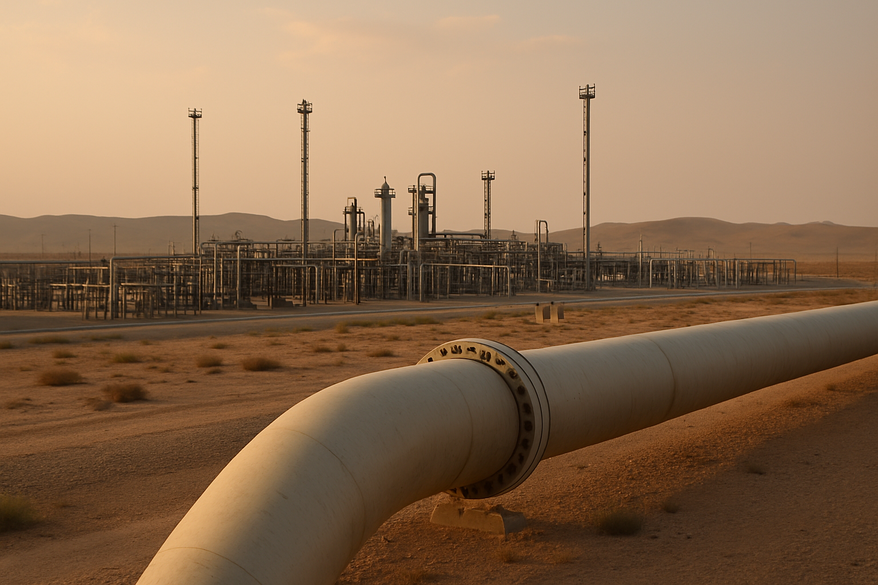Jafurah’s $11bn Midstream Deal: Signals for Gas Growth, Infrastructure, and Suppliers
The latest Jafurah announcement underscores how capital is flowing to gas and midstream infrastructure. As a manufacturer embedded in the oil and gas value chain, we watch these moves closely. They shape standards, timelines, and specification baselines for the next decade. When Saudi Aramco signs an $11bn Jafurah midstream deal and headlines break, supply chains start recalibrating.
- A large-scale lease-and-leaseback model accelerates gas monetization without overburdening balance sheets.
- Midstream assets for sour gas demand higher-spec materials, compression, and advanced integrity management.
- Expect tighter vendor qualification and longer-tail service models as assets run under concession frameworks.
What the Deal Is—and Why It Matters
At a high level, the transaction enables accelerated buildout of gathering, pipelines, and related midstream assets for Jafurah. It spreads risk across investors while keeping operational responsibility anchored. The structure supports Saudi Arabia’s broader gas strategy and downstream integration goals, as the Kingdom continues to expand gas production to free up liquids and support industrial growth. For broader context on the country’s energy mix and gas ambitions, see the U.S. Energy Information Administration’s overview of Saudi Arabia’s energy sector.
Headlines capture the essence and the market interest: a BlackRock-led group is committing long-duration capital under a concession-style framework. For example, the Financial Times reported on the BlackRock-led $11bn midstream deal at Jafurah, highlighting how investors view these assets as mature, financeable infrastructure.
We view these deals as a template for future gas hubs: capital-light for operators, specification-heavy for suppliers, and performance-driven over 20–30 years.
The Mechanics: Lease-and-Leaseback and Asset Class Evolution
Lease-and-leaseback frameworks transform pipelines and compression networks into stable, yield-oriented vehicles. Operators monetize assets while ensuring availability and reliability through long-term offtake-style payments. Investors gain inflation-linked and duration-matched cash flows. The operator retains operational control and performance accountability.
For vendors, this often means stricter lifecycle KPIs baked into contracts. It also means documentation rigor, repeatable testing protocols, and more comprehensive digital handover packages.
Lifecycle thinking increasingly dictates:
- Corrosion models and alloy selection for sour service
- Predictive maintenance systems tied to uptime guarantees
- Spares strategies aligned to concession-term SLAs
Technical Underpinning: Sour Gas, High Spec, Digital by Default
Jafurah gas handling implies sour service considerations. Expect compression stations, dehydration, NGL handling, and sulfur recovery integrations. Materials move toward CRA liners, duplex and super duplex steels, and high-reliability sealing technologies. HIPPS, ESD valves, and automated pigging can become baseline requirements, not options.
We see more digital twins, high-frequency condition monitoring, and API/IEC compliance tied to data capture. Reliability-centered maintenance becomes the default. Documentation must enable data continuity from FAT to commissioning and operations.
Key Insight: When financing hinges on asset availability, component reliability becomes a financial variable—not just an engineering choice.
Supply Chain Implications—and How We Prepare
Concession-backed midstream networks reward suppliers who combine technical depth with delivery certainty. Qualification windows can be long, but frameworks usually scale across phases once established. That favors vendors who standardize interfaces, certify weld procedures for sour service, and keep critical lead times predictable.
For our team, this means tighter engagement early in FEED, more robust metallurgy validation, and modularity in skid design. It also means harmonizing QA/QC with investor-led audit trails.
- Align with evolving specifications from early design packs
- Pre-qualify materials and welding procedures for sour gas
- Standardize digital handover to reduce commissioning friction
Reading the Headlines—and the Signals Behind Them
Different outlets framed the story in different ways, but each points to the same structural shift—midstream as a mature, financeable asset with strict performance overlays.
As Saudi Aramco advances its gas ambitions, we expect procurement waves to follow project phasing. The message for OEMs and fabricators is clear: raise reliability, prove repeatability, and deliver data alongside equipment.
